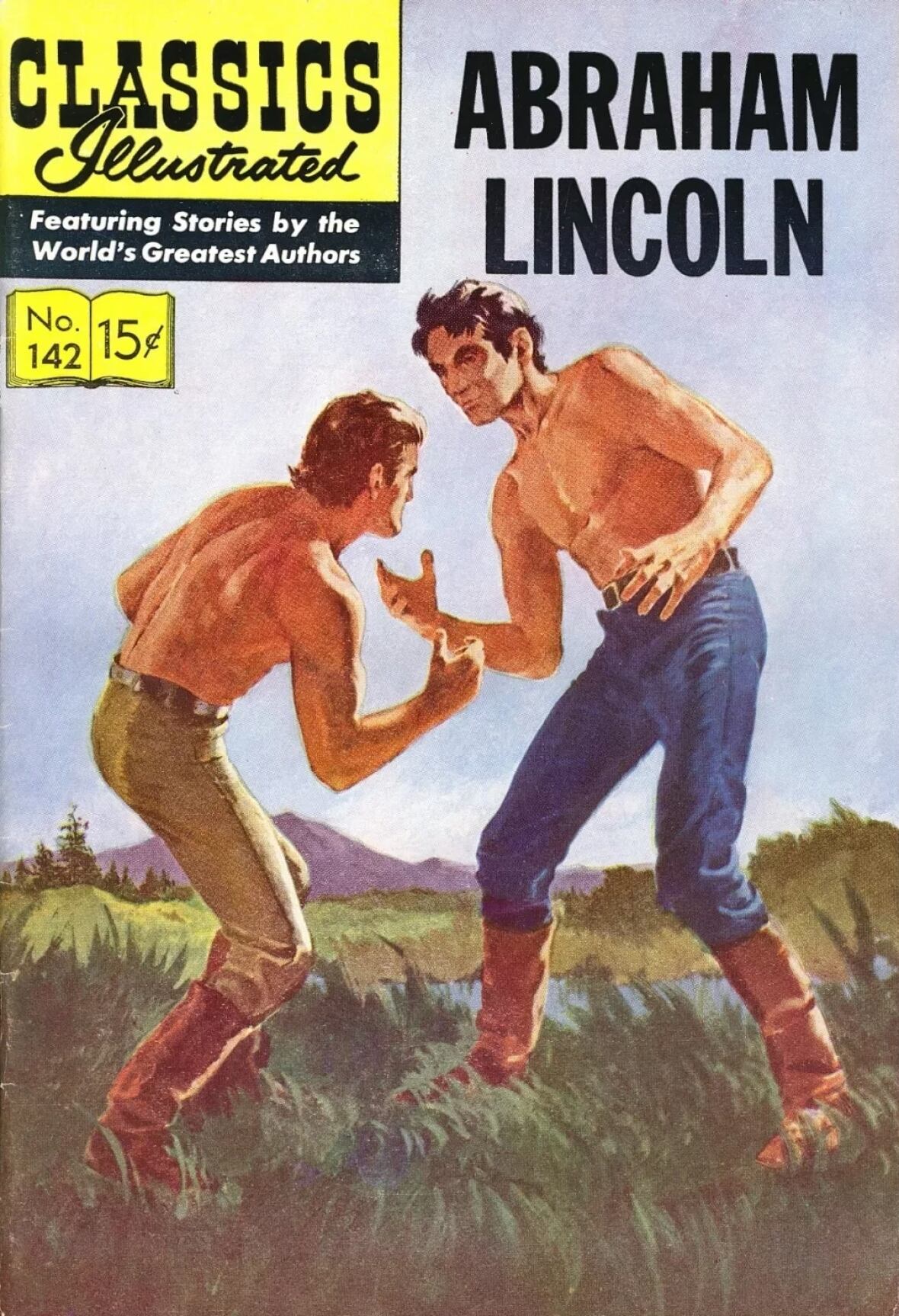A bet landed Abraham Lincoln in the Wrestling Hall of Fame


He was born in the backwoods of Kentucky in the early 1800's. His family was dirt poor. His mother died when he was nine, and he had a difficult relationship with his father. He went to school "now and then," and it is said his entire schooling amounted to less than one year's attendance. As a result, he was mostly self-educated, and loved to read. Neighbours said he would walk for miles just to borrow a book.
Reading became a great pastime for him. He wasn't able to find many books, but fully absorbed every one he could get his hands on. By the time he turned 21, he stood six-foot-four. He was lanky, but muscular and powerful. He was noted for the skill and strength with which he could wield an axe. He was a rough and tumble frontier man.
He moved to Illinois and became a rail-splitter, allowing him to earn some money clearing land and building farm fences. About that time, he settled in a town called New Salem. There he got a job as a storekeeper.
On the side, this strapping young man liked to wrestle. And he was good at it. He would wrestle in county fairs and look for matches wherever the opportunity arose. By some accounts, he wrestled for a dozen years, from his early twenties to his early thirties, and only lost one single match. But maybe his most famous match happened as the result of a bet.
His boss boasted that his young employee was not only the smartest guy in town, but also the toughest. That comment riled a gang of toughs called the Clary's Grove Boys.
His boss bet another man that his employee could beat the toughest member of that gang – a man named Jack Armstrong. Armstrong was the roughest and most feared member of the Clary's Grove Boys. So a date was set, and on the day, the entire town gathered to watch the wrestling match.

The two men stripped to the waist, and the wrestling began. The two were well matched, and the fight went on and on – and got rougher and rougher. Then, well into the fight, Armstrong used a painful, illegal move. That infuriated his young opponent, who then picked Armstrong up and threw him to the ground knocking him out.
That wrestler, the powerful fighter who beat Jack Armstrong that day, was Abraham Lincoln. That's why Abraham Lincoln is in the Wrestling Hall of Fame.
Question: Is that story true, or is it a lie?
The story is true.
A huge mural of that fight hangs on the wall inside the Wrestling Hall of Fame.
These days, it's getting more and more difficult to tell the truth from a lie. Over the decades, advertisers have often been accused of lying. But there is another side to that particular coin.
In focus groups, in surveys, and in polls, customers lie to marketers. Advertisers use that research to make important marketing decisions.
So what happens if the information advertisers use to produce products and create advertising campaigns is false?
For more on When Customers Lie to Marketers, click or tap the play button above to hear the full Under the Influence episode. Find more episodes on the CBC Listen app or subscribe to the podcast.